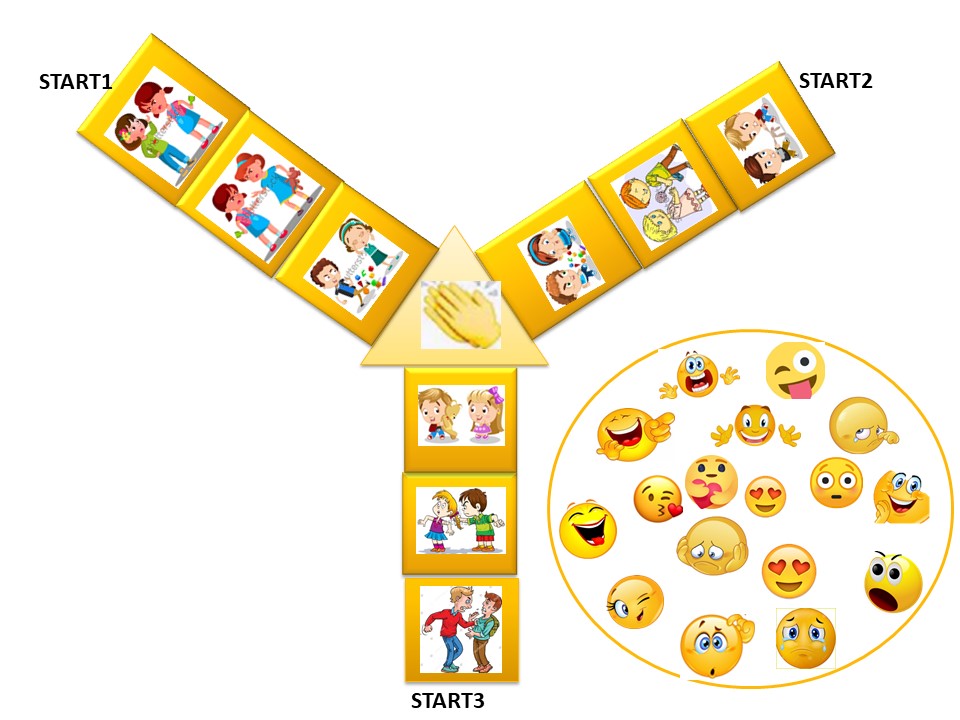Teacher’s name: D. Draganova, G. Kostadinova – 66 Preschool and kindergarten “ Elitsa” – Pancharevo
- Title of the game: I walk my own path
- General aim of the game:
Through the possibilities of educational robotics, children determine the way of action in different conflict situations, describe the emotional state of the aggressor and the victim, and distinguish between ” Positive” and “Negative” feelings.
- Age range addressed: 5-6 Years.
- Robot that can be used for this game: MIND Clementoni robots.
- Link to the game instructions and game-boards to be printed:
Description of the board:
The playing field consists of 1 equilateral triangle and 9 quadrates. The triangle is located in the center of the playing board. The squares are divided into three paths.

Other useful materials:
Drawing for the triangle in the center.
Pictures with real situations for the squares.
Emoticons, through which the feelings of the child are determined.
Phases of the game:
- Preparation:
The playing board is drawn in advance and the pictures with the situations are placed in the squares.
There are 3 players in the game. By song for counting, the first child is selected to start the game.
- Start of the game:
Children stand on one of three sides of the playing field. The first child runs the robot and starts the game from START 1.
- Core phase of the Game
- The Player 1 starts from the square START 1. Moves the robot forward one field. Explains the situation. Determines the mode of action on the situation and one’s own understanding of its solution. Determines the emotional state with an emoji of the aggressor and the victim.
- Other children watch, give an opinion and wait their turn.
- Participants 2, 3, start playing respectively from START 2 and 3 and according to the algorithm of the first participant.
- If the children have offered positive solutions to the situations, they move one move forward with the robot and explain the next picture. If they have proposed a negative solution, they miss one move.
- The game continues until all participants reach the central triangle, where the three paths meet.
- Children respond to positive decisions.
- Conclusion:
Through play, children:
- Distinguish ” Good” and “Bad”.
- Determine the emotions they experience by the aggressor and the victim in situations.
- Different develops smart flocks of children to perceive, evaluate and manage their own emotions.
- Robots help children in learning and develop algorithmic thinking.
Variants
The game can also be developed in other more complex variants of the playing field and with other topics.